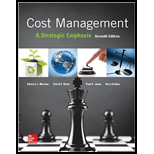
Compute the following liquidity ratios for UE for the year 2015 and 2016.
- a. Inventory Turnover
- b.
Current Ratio - c. Quick ratio
- d.
Cash flow ratio
Explanation of Solution
Analysis of the financial ratio utilizes the ratios of financial statements to evaluate the performance of the firm. Two common performance measures include liquidity and profitability. Liquidity is the ability of the firm to pay its current operating expenses (usually for one year or less) and debt maturity. The six key liquidity measures are accounts receivable turnover, stock turnover, current ratio, quick ratio, and two cash flow ratios. The greater the ratio, the better a corporation's ability to pay off its obligations in a timely manner. The four key profitability ratios are the percentage of the gross margin, return on assets, return on equity, and profit per share.
Liquidity ratios are indicators that are used to evaluate an organization's capacity to pay off its short-term obligations. Prospective creditors and lenders commonly use liquidity ratios to decide whether to extend credit or debt to companies, respectively.
- a. Inventory turnover ratio
Inventory turnover shows how many times a company is selling and replacing its stock of goods over a given period. The inventory turnover ratio formula is the cost of the goods sold divided over the same time period by the average inventory.
Calculate inventory turnover ratio for 2015 and 2016:
For 2016,
Inventory for 2016 is 332,452 and for 2015 are $367,514.
Cost of goods sold for 2016 is $2,085,480.
Calculate average inventory:
Hence, the inventory turnover ratio for 2016 is 5.96.
For 2015,
Inventory for 2015 is 367,514 and for 2014 are $301,208.
Cost of goods sold for 2016 is $1,975,471.
Calculate average inventory:
Hence, the inventory turnover ratio for 2015 is 5.91.
- b. Current Ratio
The current ratio is a
The formula to calculate the current ratio is:
Calculate current ratio for 2016:
Total current assets for 2016 are $1,141,800.
Total current liabilities for 2016 are $432,902.
Hence, the current ratio for 2016 is 2.64.
Calculate current ratio for 2015:
Total current assets for 2015 are $1,287,488.
Total current liabilities for 2015 are $405,401.
Hence, the current ratio for 2015 is 3.18.
- c. Quick ratio
The quick ratio is an indicator of the short-term liquidity position of a company and measures the ability of a company with its most liquid assets to fulfill its short-term obligations. Since it shows the ability of the company to instantly use its near-cash assets (assets that can be swiftly converted to cash) to pay down its current liabilities, it is also called the acid test ratio.
The formula to calculate the quick ratio is:
Calculate quick ratio for 2016:
Cash and short-term investments for 2016 is $630,992.
Accounts receivable for 2016 is $46,321.
Total current liabilities for 2016 are $432,902.
Hence, the quick ratio for 2016 is 1.56.
The formula to calculate the quick ratio is:
Calculate quick ratio for 2015:
Cash and short-term investments for 2015 is $745,044.
Accounts receivable for 2015 is $40,310.
Total current liabilities for 2015 are $405,401.
Hence, the quick ratio for 2015 is 1.94.
- d. Cash flow ratio
The operating cash flow ratio measures the adequacy of the cash from operating activities generated by a company to pay its current liabilities. It is calculated by dividing the cash flow of the company's current liabilities from operations. Operating cash flow ratio determines how many times out of net operating cash flow the current liabilities can be paid off.
The formula to calculate the cash flow ratio is:
Cash flow from operations for 2016 is $499,671.
Total current liabilities for 2016 are $432,902.
Hence, the cash flow ratio for 2016 is 1.15.
The formula to calculate the cash flow ratio is:
Cash flow from operations for 2015 is $398,137.
Total current liabilities for 2015 are $405,401.
Hence, the cash flow ratio for 2015 is 0.98.
Liquidity results are mixed, with improvement in some ratios and no improvement in others. Overall, not a substantial liquidity changes from 2015 through 2016. If the cash flow is deemed crucial, then the cash flow ratio improvement would be highly valued.
Want to see more full solutions like this?
Chapter 20 Solutions
Cost Management: A Strategic Emphasis
- I need help finding the correct solution to this financial accounting problem with valid methods.arrow_forwardSouth-western Manufacturing estimates its manufacturing overhead to be $420,000 and its direct labor costs to be $840,000 for year 1. The first three jobs that South-western worked on had actual direct labor costs of $25,000 for Job 101, $32,000 for job 102, and $41,000 for Job 103. For the year, actual manufacturing overhead was $435,000 and total direct labor cost was $870,000. Manufacturing overhead is applied to jobs on the basis of direct labor costs using predetermined rates. How much overhead was assigned to each of the three jobs, 101, 102, and 103?arrow_forwardWhich of the following is an example of an accrual?A) Paying cash for rentB) Recognizing revenue when it is earned, not when it is receivedC) Buying inventory on accountD) Paying for utilities in the month they are consumedarrow_forward

 AccountingAccountingISBN:9781337272094Author:WARREN, Carl S., Reeve, James M., Duchac, Jonathan E.Publisher:Cengage Learning,
AccountingAccountingISBN:9781337272094Author:WARREN, Carl S., Reeve, James M., Duchac, Jonathan E.Publisher:Cengage Learning, Accounting Information SystemsAccountingISBN:9781337619202Author:Hall, James A.Publisher:Cengage Learning,
Accounting Information SystemsAccountingISBN:9781337619202Author:Hall, James A.Publisher:Cengage Learning, Horngren's Cost Accounting: A Managerial Emphasis...AccountingISBN:9780134475585Author:Srikant M. Datar, Madhav V. RajanPublisher:PEARSON
Horngren's Cost Accounting: A Managerial Emphasis...AccountingISBN:9780134475585Author:Srikant M. Datar, Madhav V. RajanPublisher:PEARSON Intermediate AccountingAccountingISBN:9781259722660Author:J. David Spiceland, Mark W. Nelson, Wayne M ThomasPublisher:McGraw-Hill Education
Intermediate AccountingAccountingISBN:9781259722660Author:J. David Spiceland, Mark W. Nelson, Wayne M ThomasPublisher:McGraw-Hill Education Financial and Managerial AccountingAccountingISBN:9781259726705Author:John J Wild, Ken W. Shaw, Barbara Chiappetta Fundamental Accounting PrinciplesPublisher:McGraw-Hill Education
Financial and Managerial AccountingAccountingISBN:9781259726705Author:John J Wild, Ken W. Shaw, Barbara Chiappetta Fundamental Accounting PrinciplesPublisher:McGraw-Hill Education





